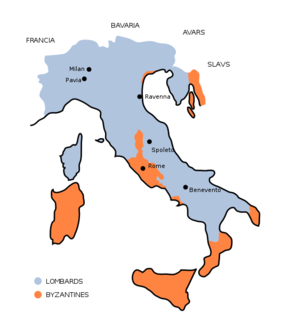 W
WThe Kingdom of the Lombards also known as the Lombard Kingdom; later the Kingdom of (all) Italy, was an early medieval state established by the Lombards, a Germanic people, on the Italian Peninsula in the latter part of the 6th century. The king was traditionally elected by the highest-ranking aristocrats, the dukes, as several attempts to establish a hereditary dynasty failed. The kingdom was subdivided into a varying number of duchies, ruled by semi-autonomous dukes, which were in turn subdivided into gastaldates at the municipal level. The capital of the kingdom and the center of its political life was Pavia in the modern northern Italian region of Lombardy.
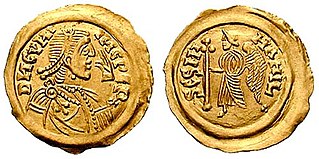 W
WThe Battle of Coronate took place in 689, after King Cunicpert returned from exile and ousted Alahis, Usurper King and Duke of Trent, from the capital Pavia.
 W
WThe Byzantine–Lombard wars were a protracted series of conflicts which occurred from AD 568 to 750 between the Byzantine Empire and a Germanic tribe known as the Lombards. The wars began primarily because of the imperialistic inclinations of the Lombard king Alboin, as he sought to take possession of Northern Italy. The conflicts ended in a Byzantine defeat, as the Lombards were able to secure large parts of Northern Italy at first, eventually conquering the Exarchate of Ravenna in 750.
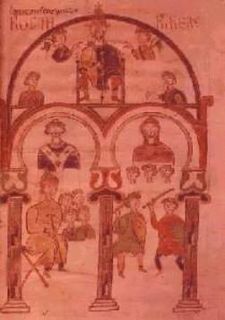 W
WThe Edictum Rothari was the first written compilation of Lombard law, codified and promulgated on 22 November 643 by King Rothari. According to Paul the Deacon, the 8th century Lombard historian, the custom law of the Lombards had been held in memory before this. The Edict, recorded in Vulgar Latin, comprised primarily the Germanic custom law of the Lombards, with some modifications to limit the power of feudal rulers and strengthen the authority of the king. Although the edict has been drafted in Latin, few lombard words were untranslatable, as "grabworfin, arga, sculdhais, morgingab, metfio, federfio, mahrworfin, launegild, thinx, waregang, gastald, mundius, angargathung, fara, walupaus, gairethinx, aldius, actugild or, wegworin".
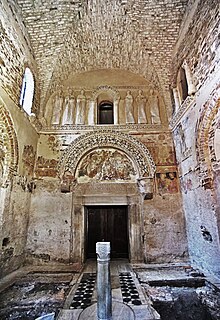 W
WThe Duchy of Friuli was a Lombard duchy in present-day Friuli, the first to be established after the conquest of the Italian peninsula in 568. It was one of the largest domains in Langobardia Major and an important buffer between the Lombard kingdom and the Slavs, Avars, and the Byzantine Empire. The original chief city in the province was Roman Aquileia, but the Lombard capital of Friuli was Forum Julii, modern Cividale.
 W
WLangobardia Maior was the name that, in the Early Middle Ages, was given to the domains of the Lombard Kingdom in Northern Italy. It comprised Lombardy proper with its capital Pavia, the Duchies of Friuli and Trent as well as the Tuscany region. In the south it was confined by the Patrimonium Sancti Petri resp. the Papal States established after the 754 Donation of Pepin, stretching from the Tyrrhenian to the Adriatic Sea. The Lombard territories beyond were called Langobardia Minor, consisting of the Duchies of Spoleto and Benevento.
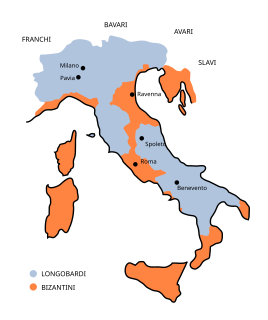 W
WLangobardia Minor was the name that, in early Middle Ages, was given to the Lombard dominion in central-southern Italy, corresponding to the duchies of Spoleto and Benevento. After the conquest of the Lombard kingdom by Charlemagne in 774 it remained under Lombard control.
 W
WThe coinage of the Lombards refers to the autonomous productions of coins by the Lombards. It constitutes part of the coinage produced by Germanic peoples occupying the former territory of the Roman Empire during the Migration Period. All known Lombard coinage was produced after their settlement of Italy. The coinage originates from two distinct areas, in Langobardia Major between the last decades of the sixth century and 774, and in Langobardia Minor, in the duchy of Benevento, between approximately 680 and the end of the 9th century.
 W
WThe Siege or Battle of Pavia was fought in 773–774 in northern Italy, near Ticinum, and resulted in the victory of the Franks under Charlemagne against the Lombards under King Desiderius.